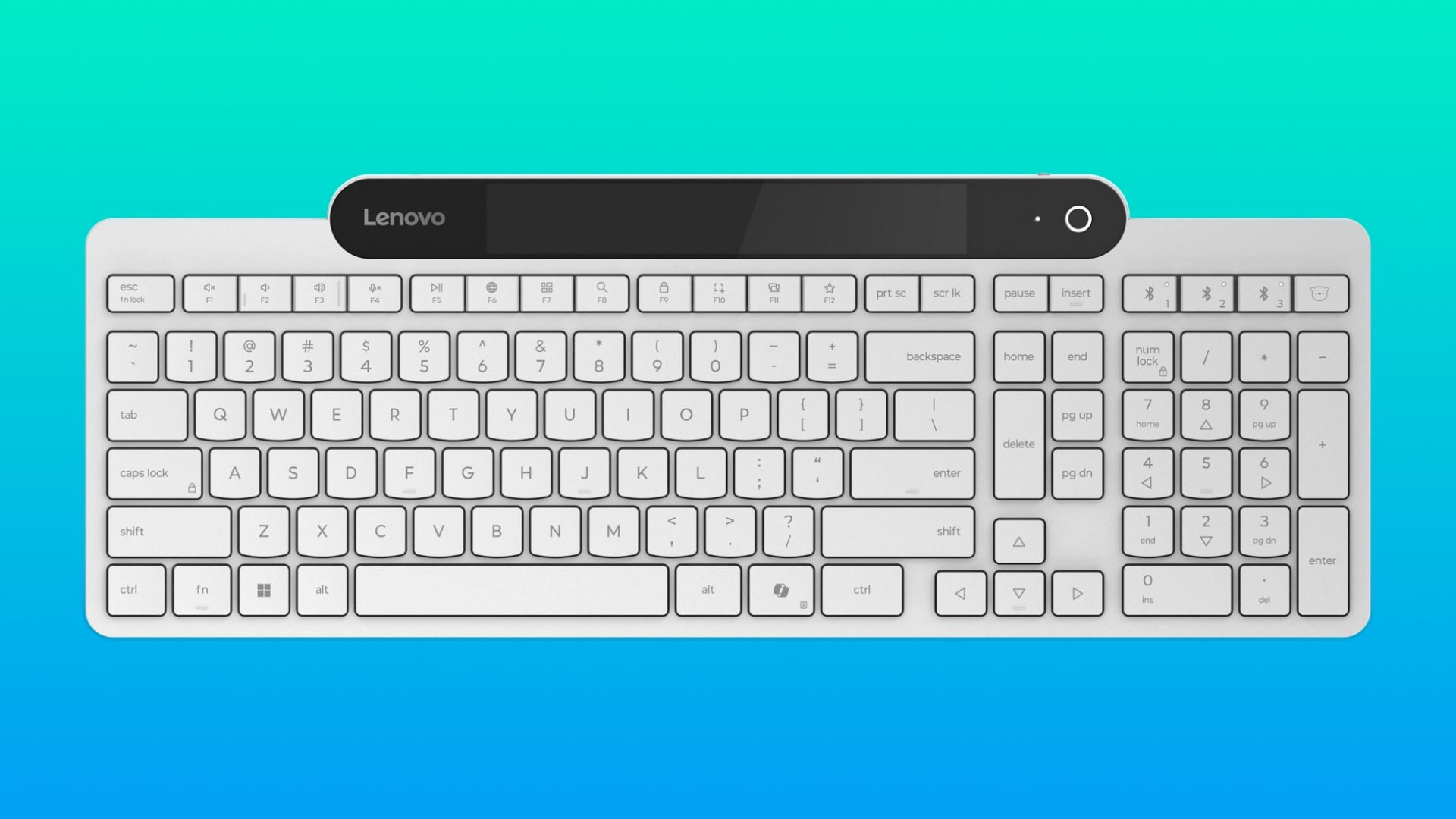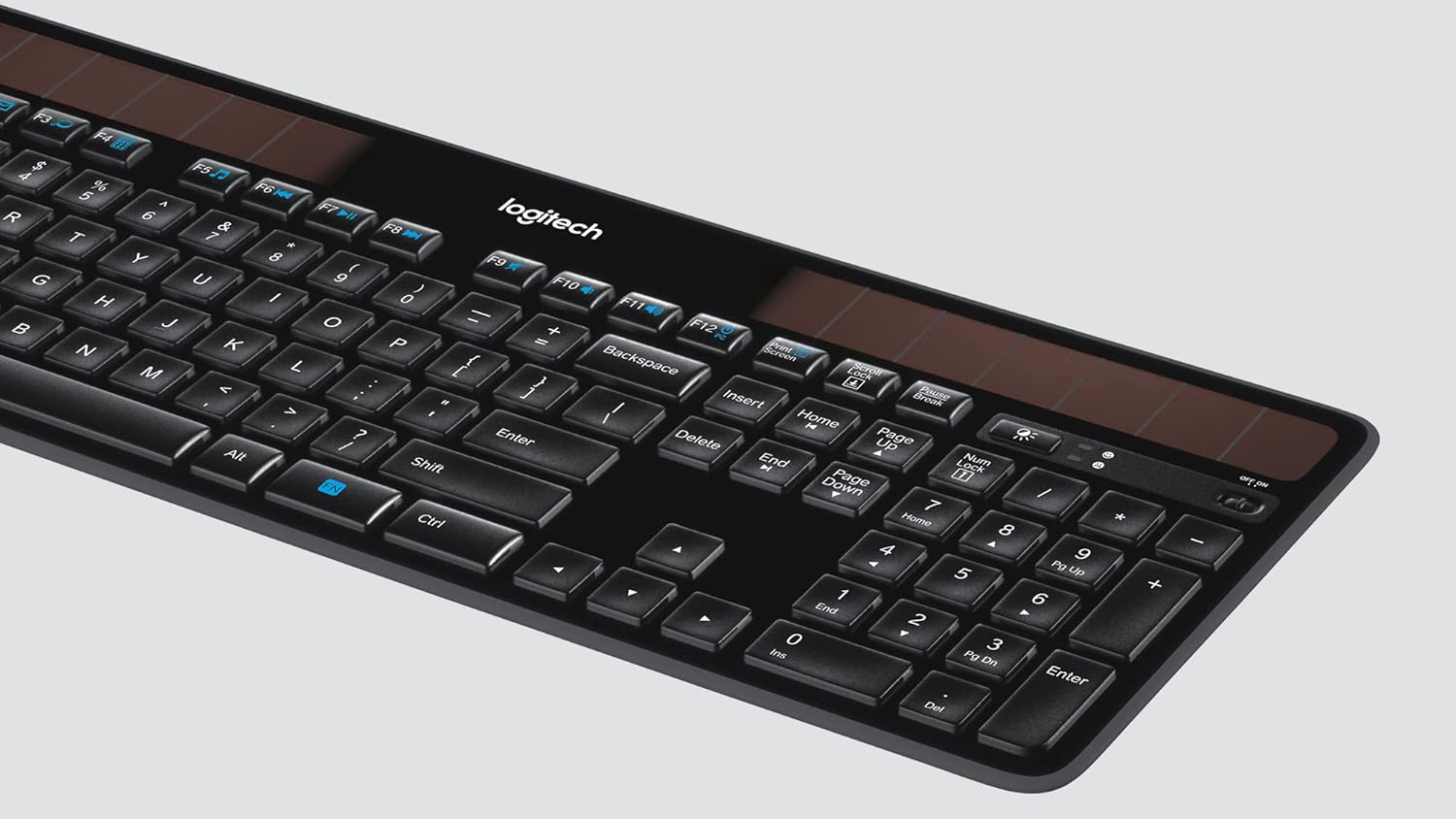Light-powered keyboards are nothing new, but hardly anyone uses the technology these days. At CES 2025, Lenovo announced that it’s bringing solar keyboards back with its new Self-Charging Bluetooth Keyboard. I just want to know one thing: why don’t more companies leverage this feature?
What Is Lenovo’s Self-Charging Bluetooth Keyboard?
The Lenovo Self-Charging Bluetooth Keyboard is a peripheral that utilizes a photovoltaic (solar) panel at the top of the keyboard to power an internal rechargeable battery through the light in your room. Lenovo isn’t the first company to do this (the Logitech K750 released 15 years ago), but they are the most recent company to launch a photovoltaic keyboard.
The Lenovo keyboard, when fully charged, can last for up to 45 days in a completely dark environment. After that, if the battery is completely depleted, it needs just two minutes in at least 300 Lux of light to be ready for use.
It can have up to three connection profiles stored at a time, and works with Microsoft Swift Pair. Plus, if you know that you’ll be without light for an extended period of time, there’s a USB-C port on it to manually recharge, though that likely won’t be necessary often.
Costing $69.99 and launching in May 2025, Lenovo is delivering a more capable and cheaper solar-powered keyboard than the Logitech K750 (which cost $80 in 2010).
Why Aren’t More Companies Harnessing the Power of Light?
I used Logitech’s K750 solar-power keyboard many moons ago, and I loved it. I never had to worry about changing batteries, I never had to plug it in. It just worked. It’s 15 years old this year, but not many keyboards since then have used solar cells.
I miss this function of my Logitech keyboard. I used the K750 for a few years, but eventually moved on as I picked up a mechanical keyboard. While I adore my current split mechanical keyboard, the wired Dygma Raise, I yearn for a wireless keyboard that I never have to plug in.
We’ve had the technology for years. Why aren’t more companies using the lights in our offices to power our peripherals? It’s not like keyboards take a ton of power to start with.
Solar-Powered Peripherals Would Mean Fewer Cables at My Desk
I’m on a mission in 2025 to eliminate as many cables as possible from my desk. Dell made me dream about getting rid of headphones entirely with its new monitor that has a built-in soundbar. Now, Lenovo is bringing back my dream about a wireless keyboard that doesn’t ever need to be plugged in.
While Lenovo’s latest keyboard fulfills this dream, it’s a plunger-style membrane keyboard that won’t offer the same typing experience as my mechanical. There are wireless mechanical keyboards, and even my favorite Dygma Raise now comes in two wireless options. So, if Lenovo can make a wireless keyboard solar-powered again, why can’t other companies?
I wish I could switch out my mouse for one that’s solar-powered, and even my game controller. I’d love to have a little dock that sits on my desk and use the power of the lights in my office or the sun outside to charge my Xbox controller.
Why aren’t we using light-power to run more things in our office? One reason could be that it’s just more complicated to build solar-powered peripherals. It could also be that companies don’t think it’s something consumers will want. Or, it could just be that companies don’t want to add one more thing to their product line-up.
DIYers are out there assembling their own solar-powered mechanical keyboards (split, too!), like this one featured on Hackaday, so we know it’s possible.
Will 2025 be the year of solar-powered office peripherals? I certainly hope so. Until then, there are plenty of great keyboards to consider which are charged through more traditional means.






